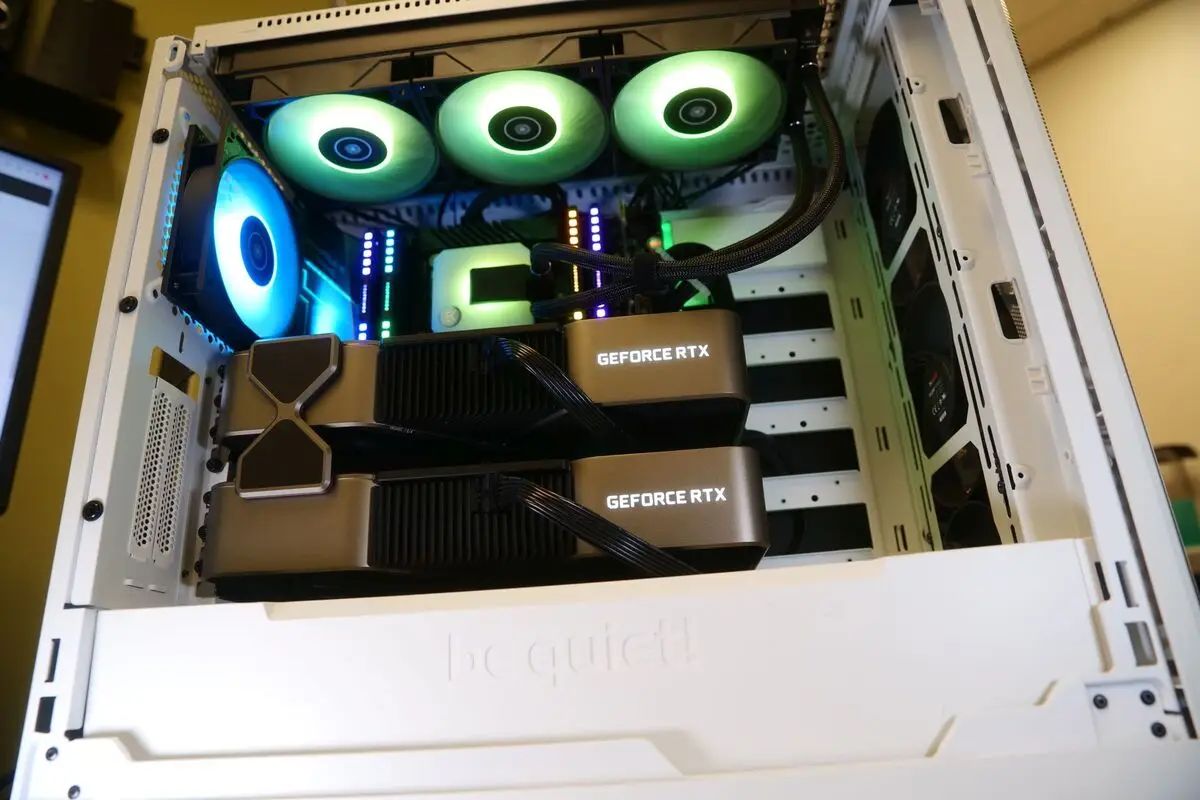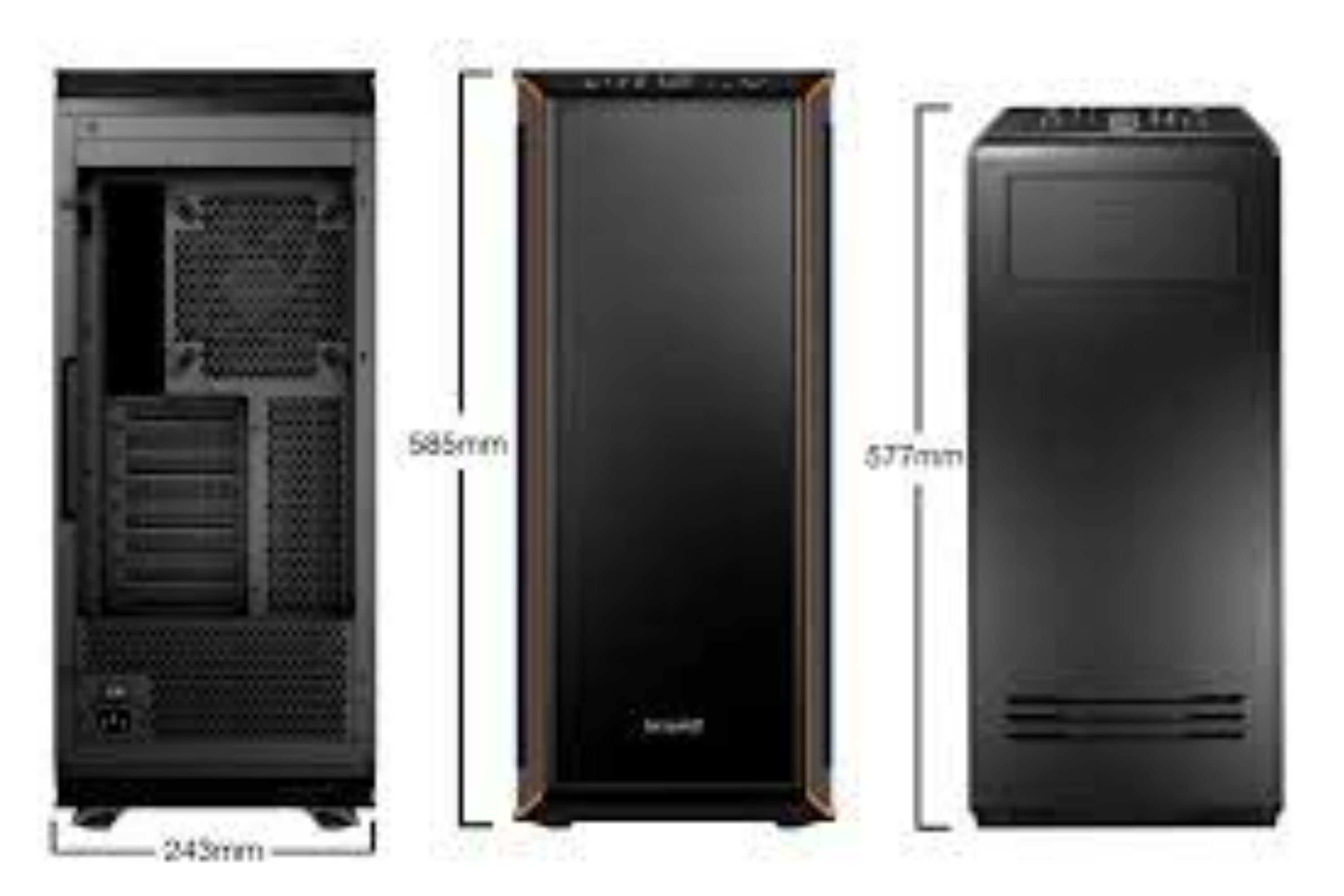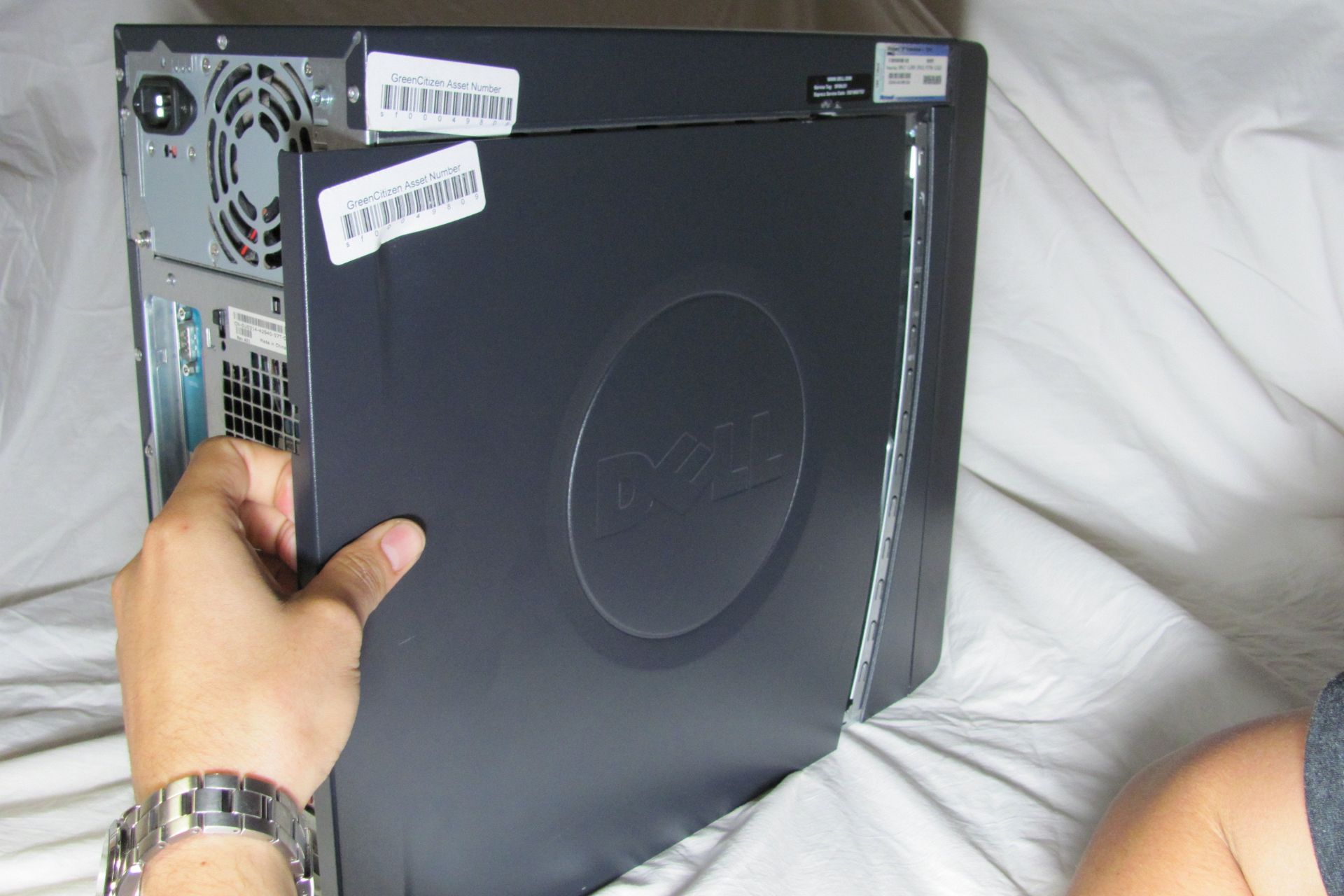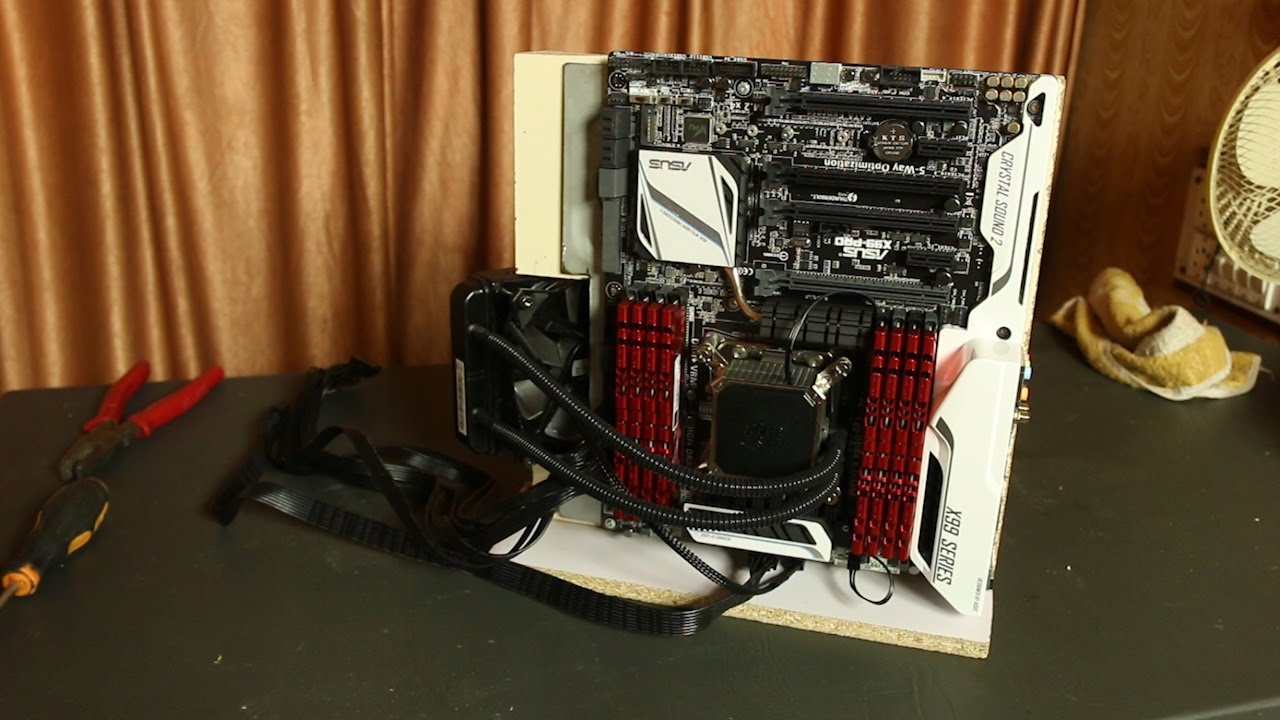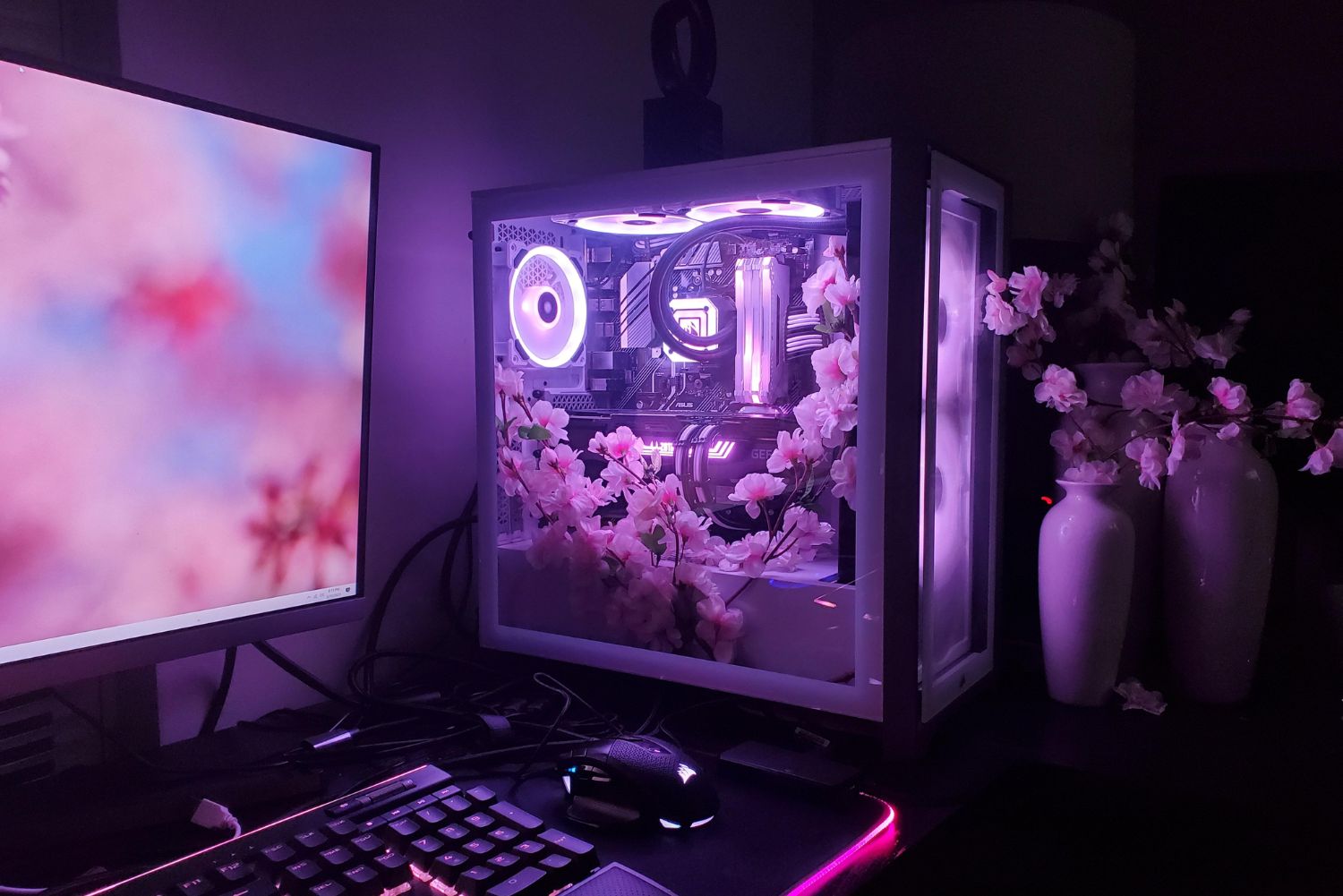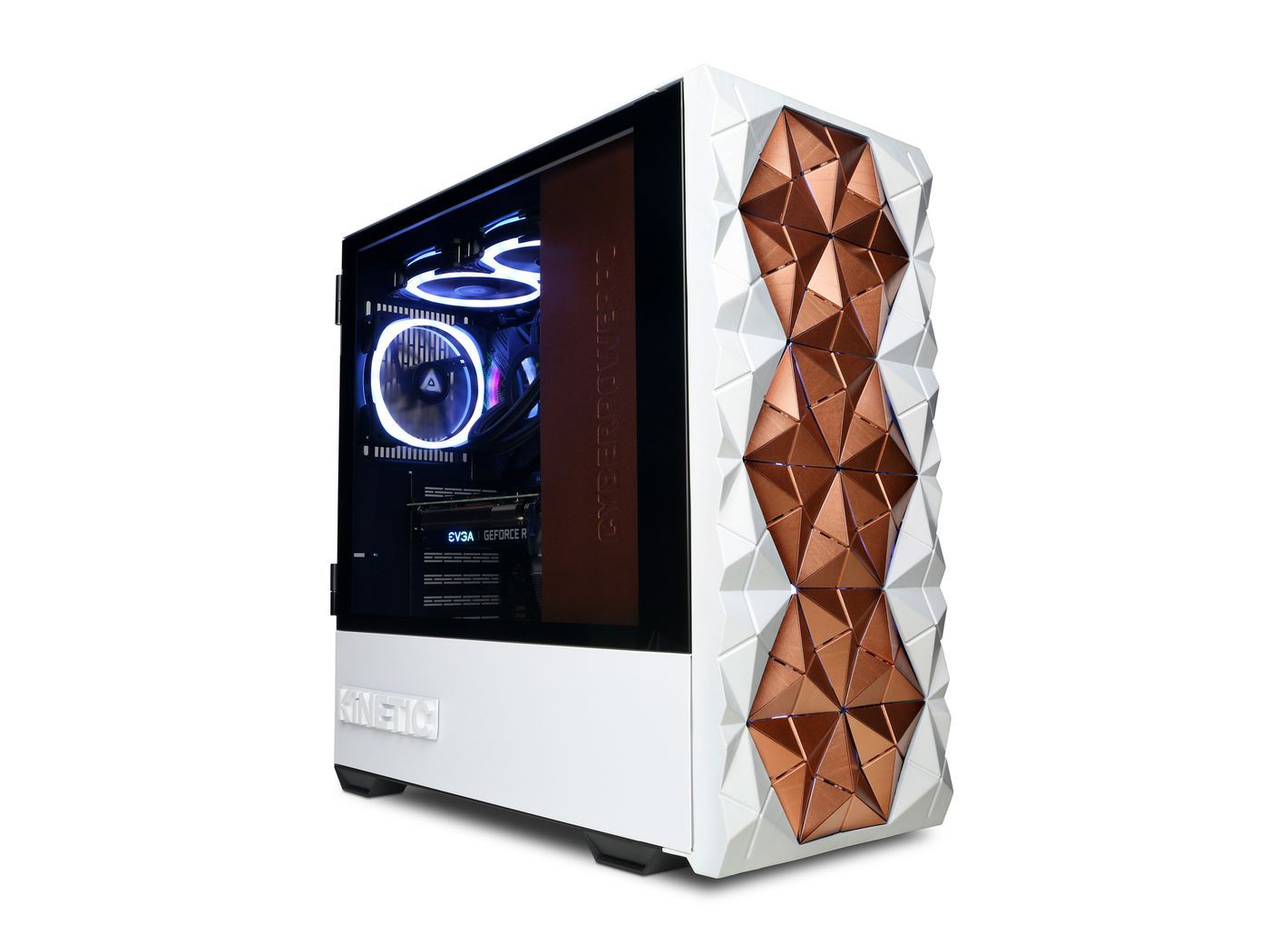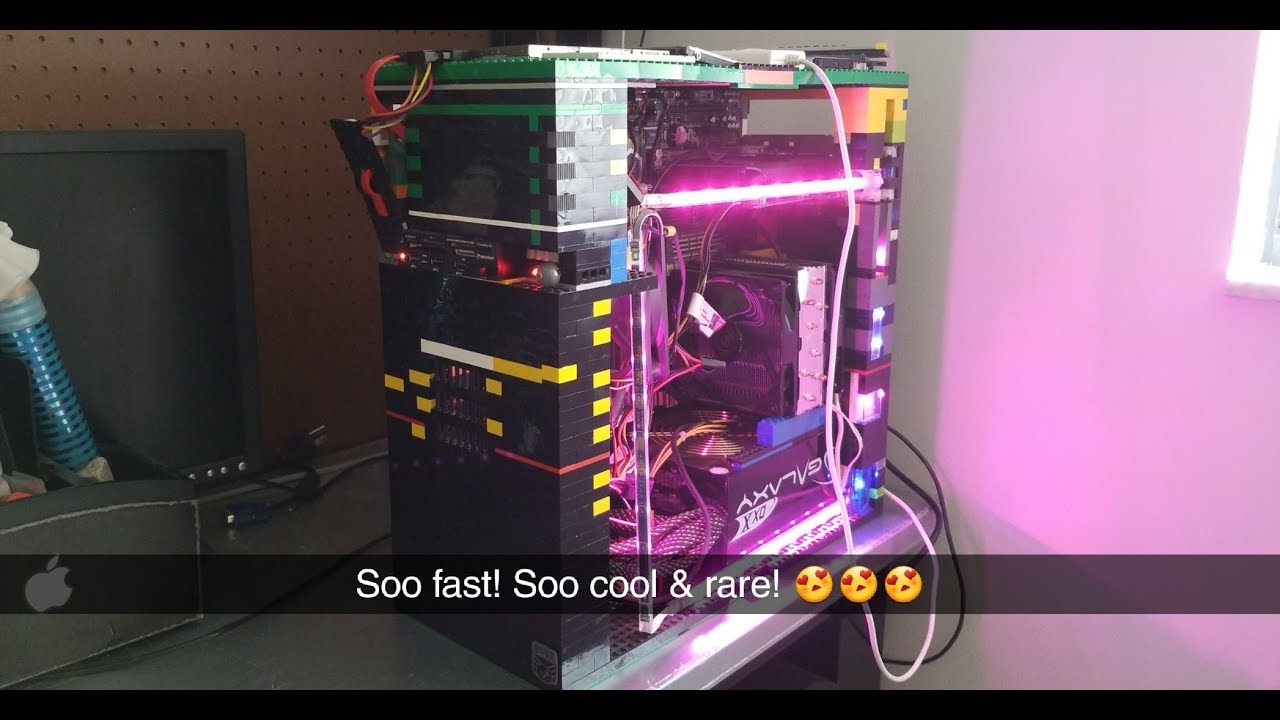Power Button and Reset Button Cables
The power button and reset button cables are essential components in a PC case. They serve the purpose of turning the computer on and off, as well as resetting the system if needed.
The power button cable is usually connected to the power button on the front panel of the case. When pressed, it sends a signal to the motherboard, instructing it to start or shut down the computer. This cable is typically labeled “PWRBTN” or “POWER” and should be plugged into the corresponding pins on the motherboard.
Similarly, the reset button cable is connected to the reset button on the front panel. Pressing this button sends a reset signal to the motherboard, allowing you to restart the system without fully shutting it down. The reset button cable is usually labeled “RST” or “RESET” and should be connected to the dedicated pins on the motherboard.
It is important to note that the polarity of these cables does not matter. You can connect them in either orientation without causing any damage. However, to ensure proper functionality, it is advised to follow the specific instructions provided by the motherboard manufacturer.
When connecting the power button and reset button cables, it is essential to refer to the motherboard’s manual or user guide. This will help you locate the correct pins for these cables, as their placement can vary depending on the motherboard model.
In some cases, PC cases may feature separate individual cables for the power LED and HDD LED, which indicate the power status and hard drive activity, respectively. These cables are typically labeled and connected to their corresponding pins on the motherboard.
Overall, properly connecting the power button and reset button cables ensures smooth operation of your PC and allows easy control over the system’s power functions.
USB Ports Cables
USB ports are essential for connecting various devices to a PC, ranging from keyboards and mice to external hard drives and printers. The USB ports cables play a crucial role in transmitting data and providing power to these devices.
In most PC cases, you will find multiple USB ports located on the front and back panels. The USB ports cables are responsible for connecting these ports to the motherboard, allowing seamless data transfer and device connectivity.
There are different types of USB connectors, including Type-A, Type-B, Micro-USB, and USB-C. The Type-A connector is the most common and is typically used for connecting peripherals like keyboards and mice. The Type-B connector is commonly found on printers and other devices. Micro-USB connectors are commonly used for smartphones and some peripherals, while USB-C is the latest and most versatile connector, capable of transmitting data at high speeds and supporting power delivery.
When connecting USB ports cables, it is crucial to match the connectors with the corresponding port on the motherboard. Most motherboards have dedicated USB headers, which are usually labeled to indicate the type and number of ports they support. You will need to connect the USB ports cables to these headers while ensuring proper alignment.
In addition to data transfer, USB ports also provide power to connected devices. The power delivery capabilities depend on the USB version and the specific ports. USB 2.0 ports typically provide 500mA, while USB 3.0 and USB 3.1 ports can deliver up to 900mA and 1.5A, respectively.
It is worth noting that some PC cases offer USB 2.0 and USB 3.0 ports separately, while others feature a combination of both. This allows compatibility with older devices that may not support USB 3.0 speeds.
Properly connecting the USB ports cables ensures that you can conveniently connect and use various USB devices with your PC. It is important to refer to the motherboard’s manual for the specific pinouts and guidelines related to USB port connections.
Audio Ports Cables
Audio ports are an essential feature of PC cases, allowing you to connect speakers, headphones, and microphones to your computer for audio input and output. The audio ports cables play a crucial role in transmitting sound signals between the motherboard and the connected audio devices.
Typically, PC cases feature audio ports on the front and/or back panels. These ports include a line-out or headphone jack for audio output, a line-in or microphone jack for audio input, and sometimes a dedicated port for connecting a microphone.
The audio ports cables are responsible for connecting these audio jacks to the corresponding audio header on the motherboard. The most common connector type used for audio ports is the 3.5mm audio jack, also known as a TRS (tip-ring-sleeve) connector. This connector is compatible with most headphones, speakers, and microphones.
When connecting the audio ports cables, it is important to ensure proper alignment and matching the correct connectors. The audio header on the motherboard is usually labeled with icons or text indicating the function and orientation of the ports. It is recommended to refer to the motherboard’s manual for specific instructions on connecting the audio ports cables.
Some PC cases may also include front panel audio connectors, which allow for easy access to audio ports on the front of the case. These connectors are typically labeled and should be connected to the appropriate pins on the motherboard to enable audio functionality on the front panel.
It is worth noting that modern motherboards often come with enhanced audio technologies, such as high-definition audio or surround sound support. These technologies may require additional audio cables or connectors to fully utilize their capabilities. It is advisable to follow the motherboard’s manual or consult the manufacturer’s website for any special requirements or recommendations.
Properly connecting the audio ports cables ensures that you can enjoy high-quality sound output and input from your PC. Whether you are gaming, listening to music, or participating in video conferences, having the audio ports properly connected allows for a seamless audio experience.
Power LED Cable
The power LED cable is a small yet essential component in a PC case that provides visual feedback on the power status of the computer. The power LED, or power indicator, is a small light located on the front panel of the case, which illuminates when the computer is turned on.
The power LED cable connects the power LED to the motherboard, allowing it to receive signals and display the appropriate status. It is typically a two-pin connector, labeled with positive (+) and negative (-) indicators. The positive pin is usually marked with a “+” symbol or a color code, while the negative pin may be left blank or marked with a “-” symbol.
When connecting the power LED cable, it is important to locate the correct pins on the motherboard. The motherboard’s manual or user guide will provide specific instructions for connecting the power LED cable. Most modern motherboards have dedicated headers for the power LED, clearly labeled for easy identification.
It is worth noting that the polarity of the power LED cable is crucial for proper operation. Connecting the positive and negative pins incorrectly may result in the LED not illuminating or flashing irregularly. Therefore, it is essential to ensure that the correct polarity is maintained during the connection.
Once the power LED cable is properly connected, you can easily monitor the power status of your PC. When the computer is turned on, the power LED will light up, indicating that it is running. Conversely, when the computer is off or in sleep mode, the power LED will be unlit.
Some PC cases may also have additional LEDs, such as hard drive activity LEDs or system status LEDs. These LEDs are typically connected in a similar manner, using separate cables and corresponding headers on the motherboard. They provide additional visual feedback on the system’s operation and can be helpful for troubleshooting purposes.
Properly connecting the power LED cable ensures that you can quickly and easily determine the power status of your computer. It adds a functional and aesthetic element to your PC case, enhancing its overall appeal and usability.
HDD LED Cable
The HDD LED cable is an important component in a PC case that provides visual feedback on the activity of the hard disk drive (HDD). The HDD LED, or hard drive activity indicator, is a small light located on the front panel of the case, which blinks or flashes to indicate when the hard drive is in use.
The HDD LED cable connects the HDD LED to the motherboard, allowing it to receive signals and display the appropriate activity status. Similar to the power LED cable, it is typically a two-pin connector labeled with positive (+) and negative (-) indicators. The positive pin is usually marked with a “+” symbol or a color code while the negative pin may be left blank or marked with a “-” symbol.
When connecting the HDD LED cable, it is essential to locate the correct pins on the motherboard. The motherboard’s manual or user guide will provide specific instructions for connecting the HDD LED cable. Most modern motherboards have dedicated headers for the HDD LED, clearly labeled for easy identification.
Just like the power LED cable, maintaining the correct polarity of the HDD LED cable is crucial for proper operation. Connecting the positive and negative pins incorrectly may result in the LED not flashing or flashing in an irregular pattern. Therefore, it is important to ensure the correct polarity is maintained during the connection.
Once the HDD LED cable is properly connected, you can easily monitor the activity of your hard drive. When the hard drive is being accessed or data is being transferred, the HDD LED will blink or flash, indicating the activity. Conversely, when there is no activity, the HDD LED will remain steady or unlit.
The HDD LED is particularly useful in situations where you want to determine if the hard drive is actively being used, such as during file transfers or software installations. It provides visual feedback, allowing you to assess the status of the hard drive at a glance.
It is worth noting that with the advancement of solid-state drives (SSDs), which have no moving parts, the HDD LED may not be as necessary or may be repurposed for other uses in some PC cases. However, for systems with traditional HDDs or a combination of HDDs and SSDs, the HDD LED cable remains an important feature.
Properly connecting the HDD LED cable ensures that you can visually monitor the activity of your hard drive, providing valuable information about its usage and performance.
Speaker Cable
The speaker cable is a crucial component in a PC case that allows you to connect external speakers or headphones for audio output. It plays a vital role in transmitting audio signals from the computer to the audio devices, providing clear and high-quality sound.
When it comes to speaker cables, there are different types and connectors available. The most common type is the 3.5mm audio jack, also known as a TRS (tip-ring-sleeve) connector. This connector is compatible with most speakers, headphones, and audio devices.
When connecting the speaker cable, one end with the 3.5mm audio jack should be plugged into the corresponding audio output port on the back of the PC case or the front panel audio port. The other end of the cable, depending on the audio devices being used, can be connected to external speakers, headphones, or an amplifier system.
It’s important to ensure a secure connection when plugging in the speaker cable to avoid audio distortion or incomplete sound playback. Additionally, make sure the volume levels are appropriately adjusted on both the computer and the connected audio devices for optimal audio performance.
Some PC cases may also have separate audio ports specifically designed for connecting speakers or headphones. These ports can be found on the front panel of the case, allowing convenient access to audio output.
It’s important to note that modern motherboards often come equipped with enhanced audio technologies such as surround sound or Hi-Fi audio. These technologies may require additional cables or connectors to fully utilize their capabilities. It is advisable to consult the motherboard’s manual or the manufacturer’s website for any specific instructions or recommendations.
Properly connecting the speaker cable ensures that you can enjoy high-quality audio output from your PC. Whether you are gaming, watching movies, or listening to music, having the speaker cable securely connected allows for an immersive and enjoyable audio experience.
Front Panel Audio Cable
The front panel audio cable is an important cable in a PC case that enables easy access to audio ports on the front of the case. It allows you to connect headphones, microphones, or other audio devices directly to the front panel, providing convenient and quick audio connectivity.
When it comes to front panel audio cables, they usually consist of multiple connectors, including a headphone jack, microphone jack, and sometimes additional ports for line-in or line-out. These connectors are typically located on the front panel of the PC case, easily accessible for plugging in your audio devices.
Connecting the front panel audio cable is a straightforward process. The cable is usually labeled with text or icons indicating the function of each connector. You will need to match the corresponding ports on the motherboard to the connectors on the front panel audio cable.
Most modern motherboards have dedicated front panel audio headers, usually located near the bottom edge of the motherboard. These headers are labeled and have specific pin configurations that correspond to the connections on the front panel audio cable.
When connecting the front panel audio cable, it is important to align the connectors properly to ensure accurate audio input and output. The connectors are usually polarized, meaning they can only be inserted in one orientation. Take care to match the pins and connectors correctly to avoid any audio issues.
Once the front panel audio cable is properly connected, it enables you to conveniently use audio devices with your PC. You can easily connect headphones for private listening, plug in a microphone for voice chat or recording, or utilize other audio devices without the hassle of reaching around to the back of the case.
It’s worth noting that some motherboards may require specific settings in the BIOS to utilize the front panel audio connectors. Refer to the motherboard’s manual or the manufacturer’s website for any specific instructions or requirements regarding the front panel audio functionality.
Properly connecting the front panel audio cable provides easy access to audio ports on the front of your PC, allowing seamless audio connectivity without the need to reach around to the back panel. It adds convenience and accessibility to your audio experience.
Fan Cables
Fan cables are essential components in a PC case that provide power and control for cooling fans. These cables are responsible for connecting the fans to the motherboard or fan controllers, ensuring effective cooling and temperature regulation within the computer system.
PC cases typically feature multiple fans, including intake fans to bring in cool air and exhaust fans to expel hot air. The fan cables are used to connect these fans to the appropriate fan headers on the motherboard or fan controllers, allowing them to receive power and control signals.
When connecting fan cables, it is important to identify the correct fan headers. Most modern motherboards have dedicated fan headers labeled with text or icons to indicate their specific function and placement. The number of fan headers may vary depending on the motherboard model.
The fan cables usually consist of a three or four-pin connector on one end and a corresponding connector for the fan itself on the other end. The pins on the cable and the fan connector are designed to match the corresponding pins on the fan header, ensuring a proper and secure connection.
When connecting the fan cables, it is crucial to pay attention to the alignment of the pins and connectors. The connectors are often designed to fit in only one orientation, ensuring a correct and secure connection. Improper alignment may result in the fan not functioning properly or not being detected by the motherboard or fan controller.
In addition to power, some fan cables may also include a separate control wire, typically with a four-pin connector. This allows the motherboard or fan controller to adjust the fan’s speed based on the system’s temperature. Fans with this type of control wire are often referred to as PWM (Pulse Width Modulation) fans.
Proper cable management is important when connecting fan cables to ensure good airflow and prevent cable clutter inside the PC case. Securing the cables neatly using cable ties or other cable management solutions can help maintain a clean and efficient system.
By properly connecting fan cables, you ensure that the fans in your PC case are receiving the necessary power and control signals to effectively cool the system. This helps maintain optimal temperatures, improve overall performance, and extend the lifespan of your computer components.
USB 3.0 Cable
The USB 3.0 cable is an advanced version of the Universal Serial Bus (USB) interface that offers faster data transfer speeds and improved power delivery compared to its predecessors. It is designed to connect various devices, such as external hard drives, flash drives, and peripherals, to a computer system.
USB 3.0 cables are easily identifiable by their blue-colored connectors, which help differentiate them from USB 2.0 cables. These cables come in various lengths and typically have a standard Type-A connector on one end, which plugs into the computer or USB hub. The other end of the cable may have different types of connectors, such as Type-B, Micro-USB, or USB-C, depending on the device being connected.
One of the main advantages of USB 3.0 is its significantly increased data transfer speed. USB 3.0 supports a transfer rate of up to 5 gigabits per second (Gbps), which is ten times faster than the previous USB 2.0 standard. This high speed enables faster file transfers, quicker backups, and smoother data streaming.
In addition to faster data transfer speeds, USB 3.0 also provides improved power delivery capabilities. USB 3.0 ports can deliver more power to connected devices, allowing for faster charging of smartphones, tablets, and other USB-powered devices.
To take full advantage of USB 3.0’s capabilities, it is essential to connect the USB 3.0 cable to a compatible USB 3.0 port on the computer or USB hub. USB 3.0 ports are usually labeled with the distinctive blue color, indicating their compatibility with USB 3.0 devices.
If a USB 3.0 device is connected to a USB 2.0 port, it will still function, but at the slower USB 2.0 speed. Similarly, if a USB 2.0 device is connected to a USB 3.0 port, it will operate at the USB 2.0 speed. Therefore, it is important to ensure that both the cable and the port are USB 3.0 compatible for optimal performance.
It’s worth noting that USB 3.0 cables are backward compatible with USB 2.0 devices, meaning you can still use a USB 3.0 cable to connect USB 2.0 devices. However, the transfer speeds will be limited to the capabilities of the USB 2.0 standard.
Properly connecting a USB 3.0 cable allows for faster data transfer speeds and improved power delivery, enhancing the overall functionality and performance of your computer system. Whether you’re transferring large files, connecting external storage devices, or charging USB-powered devices, the USB 3.0 cable provides enhanced speed and convenience.
Fan Controller Cable
A fan controller cable is a specialized cable used to connect cooling fans to a fan controller device. It allows for precise control over fan speed and provides an efficient way to manage the cooling performance of a PC system.
A fan controller is a device that regulates the speed of the fans connected to it. It can be a standalone unit installed inside the PC case or integrated into the motherboard or a dedicated fan controller panel on the case itself.
The fan controller cable typically consists of a multi-pin connector on one end and individual fan connectors on the other. The multi-pin connector is designed to fit into the fan controller device, while the individual fan connectors are connected to the fans.
When connecting the fan controller cable, it is important to ensure that the connectors are correctly aligned and securely plugged in. This ensures a reliable connection and proper communication between the fan controller and the fans.
One of the main advantages of using a fan controller is the ability to adjust the fan speed according to specific requirements. By controlling the fan speed, you can achieve a balance between efficient cooling and reduced noise levels.
Some fan controllers offer manual control options, allowing you to manually adjust the fan speed using knobs, sliders, or buttons on the controller itself. Others may offer automated control features based on temperature sensors or software control through the operating system.
Fan controller cables can also include additional features such as LED lighting control, providing a convenient way to adjust the lighting effects of fans with integrated LEDs.
It’s important to note that the number of fans supported by a fan controller may vary. Some controllers can handle a limited number of fans, while others support a larger number of fans, depending on the device’s specifications.
When connecting the fan controller cable, it’s vital to consider cable management to ensure proper airflow and prevent cable clutter inside the PC case. Use cable ties or other cable management solutions to neatly secure and route the cables.
Properly connecting the fan controller cable allows for precise control over fan speed and provides more efficient cooling management for your PC system. It offers flexibility in managing fan performance, enabling you to fine-tune cooling to suit your needs and create a better overall computing experience.
SATA Cables
SATA (Serial Advanced Technology Attachment) cables are crucial data cables used to connect storage devices, such as hard drives and solid-state drives (SSDs), to a computer’s motherboard or SATA controller. These cables enable data transfer between the storage devices and the computer for efficient storage management.
SATA cables are typically slim and flat, with a narrow, L-shaped connector at each end. The connectors are designed to fit securely into the SATA ports on the motherboard or SATA controller and the corresponding ports on the storage device.
One end of the SATA cable is connected to the SATA port on the storage device, while the other end is connected to the SATA port on the motherboard or SATA controller. It is important to ensure a secure connection by aligning the L-shaped connectors correctly and firmly inserting them into the ports.
SATA cables come in different variations, including SATA I, SATA II, and SATA III. Each variation supports different data transfer speeds. SATA III, the most recent version, offers the highest speed, capable of reaching up to 6 gigabits per second (Gbps), while SATA II supports speeds up to 3 Gbps, and SATA I supports speeds up to 1.5 Gbps.
When connecting SATA cables, it is important to ensure compatibility with the SATA ports on the storage device and the motherboard. For example, using a SATA III cable with a SATA II storage device or motherboard will limit the data transfer speed to the maximum supported by the slower version.
In addition to data transfer, SATA cables also provide power to the connected storage devices. SATA power connectors, typically included along the length of the SATA cables, deliver power from the computer’s power supply unit (PSU) to the storage devices.
One of the advantages of SATA cables is their flexibility and simplicity in installation. The slim and flat design allows for easy cable management, reducing clutter inside the PC case and improving airflow. Additionally, SATA cables usually have a latching mechanism to ensure a secure connection and prevent accidental disconnections.
SATA cables are widely used in modern PC systems and have replaced older data cable technologies like IDE (Integrated Drive Electronics) cables. Their reliability and high data transfer speeds make them an ideal choice for connecting storage devices and managing data in a convenient and efficient manner.
Graphics Card Cables
Graphics card cables are essential components used to connect a graphics card, also known as a video card or GPU (Graphics Processing Unit), to a computer’s power supply unit (PSU) and display output. These cables provide the necessary power and data connectivity to ensure proper functioning and optimal performance of the graphics card.
One of the main cables used for graphics cards is the PCIe (Peripheral Component Interconnect Express) power cable. This cable is responsible for delivering power from the PSU to the graphics card, ensuring it has sufficient power to operate. PCIe power cables come in two forms: 6-pin and 8-pin connectors. Some high-end graphics cards require multiple PCIe power cables for additional power delivery.
In addition to the PCIe power cable, the graphics card may also require other cables, depending on the specific model and functionalities. These can include SLI (Scalable Link Interface), Crossfire, or NVLink cables for multi-GPU configurations, or DisplayPort, HDMI, or DVI cables for video output to the display.
The type and number of cables needed for a graphics card depend on its specifications and the specific requirements of the system. It is important to consult the graphics card’s manual or specifications to determine the exact cables needed and their appropriate connections.
When connecting graphics card cables, it is essential to ensure that the connectors are securely plugged in and aligned correctly. A loose or improper connection can cause instability or improper functioning of the graphics card.
Proper cable management is also crucial when connecting graphics card cables. Ensuring that the cables are neatly organized, secured, and routed can help improve airflow inside the PC case and prevent cable clutter, ensuring optimal cooling and system performance.
It is important to note that some high-end graphics cards may require a higher wattage PSU to provide sufficient power for their operation. It is advisable to check the graphics card manufacturer’s recommendations or consult the PSU specifications to ensure compatibility and proper power delivery.
Graphics card cables play a vital role in the overall functionality and performance of a graphics card. By connecting the appropriate cables correctly, you can ensure that the graphics card receives the necessary power and data connections, allowing for smooth and high-performance graphics rendering and display.
Ethernet Cable
An Ethernet cable is a type of network cable used to connect devices to a local area network (LAN) or the internet. It allows for fast and reliable data transmission between devices, such as computers, routers, switches, and modems.
Ethernet cables are commonly used for wired internet connections and are designed to carry data using Ethernet protocols. The most commonly used Ethernet cable is the Category 5e (Cat 5e) cable, which supports data transfer speeds up to 1000 megabits per second (Mbps) or 1 gigabit per second (Gbps).
When connecting devices using Ethernet cables, a typical setup involves plugging one end of the cable into the Ethernet port on a device, such as a computer or gaming console, and the other end into a router or modem. This establishes a wired connection between the device and the network, enabling fast and stable data transfer.
Ethernet cables come in various lengths, allowing for flexible placement of devices within the network. It is important to choose an appropriate cable length that can accommodate the distance between the connected devices without causing signal degradation or loss.
It is also worth noting that Ethernet cables utilize different connectors, such as the RJ-45 connector, which is the most widely used. The RJ-45 connector has eight pins and is designed to fit securely into Ethernet ports.
When connecting Ethernet cables, it is essential to ensure a proper and secure connection. The connectors should be inserted fully into the Ethernet ports, ensuring that all pins make contact and establish a reliable connection.
Ethernet cables provide several advantages over wireless connections. They offer faster and more consistent speeds, lower latency, and greater reliability compared to wireless connections. They are particularly beneficial for applications that require high bandwidth, such as online gaming, streaming high-definition videos, and transferring large files.
Ethernet cables are also widely used in business environments, where stable and secure connections are crucial for transferring data between computers and network devices.
It’s important to note that Ethernet cables can support different versions of Ethernet, such as 10/100Mbps (Fast Ethernet) and 10/100/1000Mbps (Gigabit Ethernet). The type of cable you choose should match the capabilities of your devices and the network infrastructure.
Properly connecting Ethernet cables is essential for establishing reliable wired connections in a network. Whether for personal or business use, Ethernet cables provide a fast, secure, and efficient means of networking between devices, ensuring smooth data transmission and seamless internet connectivity.
HDMI Cable
An HDMI (High-Definition Multimedia Interface) cable is a widely used audio/video cable that allows for high-quality digital transmission of audio and video signals between devices. It has become the standard for connecting various multimedia devices, such as TVs, projectors, gaming consoles, Blu-ray players, and computers.
HDMI cables can transmit both high-definition video and multi-channel audio signals, eliminating the need for separate audio and video cables. They support resolutions ranging from standard definition (480p) to ultra-high definition (4K and even 8K), providing crystal-clear visuals and immersive audio experiences.
HDMI cables typically have a rectangular-shaped connector at each end, featuring multiple pins arranged in rows. These connectors are designed to fit securely into the HDMI ports on compatible devices, ensuring a reliable and high-bandwidth connection.
When connecting devices using HDMI cables, one end of the cable is plugged into the HDMI output port of the source device (e.g., a computer) and the other end into the HDMI input port of the receiving device (e.g., a TV). This establishes a direct digital connection, allowing for the transmission of audio and video signals without any loss in quality.
Modern HDMI cables can support additional features, such as Ethernet connectivity through the HDMI cable, allowing for internet access on compatible devices. HDMI cables can also carry control signals, enabling functions like device control and automatic audio and video synchronization.
It’s important to choose an HDMI cable that supports the desired video resolution and audio quality for your specific needs. While there are different HDMI cable versions (such as HDMI 1.4, HDMI 2.0, and HDMI 2.1), most modern cables are backward compatible, meaning they can handle higher resolutions and features of earlier versions.
When connecting HDMI cables, it is essential to align the connectors properly and ensure a secure connection. A loose or improperly inserted cable can result in no signal, flickering, or other video or audio issues.
HDMI cables offer a convenient and reliable solution for transmitting high-quality audio and video signals between devices. Their versatility, compatibility, and ability to deliver immersive multimedia experiences have made them a popular choice in home entertainment systems, gaming setups, and professional audio/video installations.
Whether you’re enjoying your favorite movies, playing video games, or giving a presentation, a properly connected HDMI cable ensures a seamless and superior audiovisual experience.
DisplayPort Cable
The DisplayPort cable is a digital audio/video cable that allows for high-quality transmission of audio and video signals between devices. It is widely used for connecting computers, monitors, TVs, and other multimedia devices.
The DisplayPort cable supports high-resolution displays and high-refresh-rate video playback, making it suitable for gaming, graphic design, and video editing applications that require precise image reproduction. It can handle resolutions up to 8K and supports a wide color gamut, providing vibrant and accurate colors.
DisplayPort cables are typically characterized by their distinctive connector, which resembles a rectangle with one corner cut off. The connector features a latch that provides a secure connection between the cable and the device’s DisplayPort port.
One of the advantages of DisplayPort is its ability to carry both video and audio signals in a single cable. This eliminates the need for separate audio cables, simplifying the setup and reducing cable clutter.
DisplayPort cables come in different versions, including DisplayPort 1.1, DisplayPort 1.2, DisplayPort 1.3, DisplayPort 1.4, and the latest DisplayPort 2.0. Each version offers different capabilities and improvements in terms of bandwidth, resolution, and refresh rate support.
When connecting devices using DisplayPort cables, one end of the cable is plugged into the DisplayPort output port of the source device (e.g., a computer or graphics card), and the other end is connected to the DisplayPort input port of the receiving device (e.g., a monitor or TV).
DisplayPort cables can also support daisy-chaining, allowing multiple devices to be connected in sequence, using a single DisplayPort output port on the source device. This simplifies cable management and enables the connection of multiple displays without the need for additional video outputs on the source device.
Like other cables, it’s important to align the DisplayPort connectors properly and ensure a secure connection for optimal signal transmission. The latching mechanism provides a firm connection and prevents accidental disconnections.
DisplayPort cables are a popular choice for professionals and enthusiasts seeking high-quality audio and video performance. They offer a flexible and reliable solution for connecting devices, delivering sharp visuals, and immersive audio experiences.
Whether you’re gaming, working with graphics-intensive applications, or enjoying multimedia content, a properly connected DisplayPort cable ensures excellent image quality and supports the demanding requirements of modern multimedia applications.
DVI Cable
The DVI (Digital Visual Interface) cable is a widely used digital video cable that allows for high-quality transmission of video signals between devices, including computers, monitors, projectors, and TVs. It provides a reliable and efficient means of connecting devices to display high-resolution video content.
DVI cables can transmit both digital and analog video signals, making them suitable for various display technologies. They support different DVI standards, including DVI-A (analog), DVI-D (digital), and DVI-I (integrated, supporting both digital and analog signals).
DVI cables typically have a rectangular-shaped connector with pins arranged in rows, similar to the VGA (Video Graphics Array) connector. However, DVI delivers superior image quality compared to VGA, offering higher resolutions and better color fidelity.
When connecting devices using DVI cables, one end of the cable is plugged into the DVI output port of the source device, such as a computer’s graphics card, and the other end is connected to the DVI input port of the receiving device, such as a monitor.
It is important to note that DVI cables come in different variants, including DVI-D, DVI-I, and DVI-A. DVI-D cables carry only digital signals, while DVI-I cables support both digital and analog signals. DVI-A cables transmit only analog signals and are used less commonly in modern digital displays.
DVI cables support various video resolutions, including standard definition (480p), high definition (720p and 1080p), and higher resolutions up to 2560×1600 pixels. Some DVI cables may also support dual-link configurations for even higher resolutions or for supporting multiple displays.
When connecting DVI cables, it is important to align the connectors properly and ensure a secure connection. The provided screws should be tightened to hold the connection firmly, preventing any signal interference or loss.
It is worth noting that DVI cables do not carry audio signals. If audio is also required, separate audio cables or alternate audio connection methods, such as HDMI or DisplayPort with audio support, may be necessary.
The popularity of DVI cables has decreased over time as newer and more advanced connectors, such as HDMI and DisplayPort, offer additional features and superior capabilities. However, DVI is still widely supported in many devices, making it a viable option for high-quality video transmission.
Properly connecting DVI cables ensures accurate and high-resolution video reproduction, making them an ideal choice for applications that demand high-quality visual output, such as gaming, multimedia content creation, and professional graphic design.
VGA Cable
The VGA (Video Graphics Array) cable is an analog video cable commonly used to connect devices, such as computers and monitors, for video output. It has been a widely adopted standard for many years and has been a staple in the world of display connections.
VGA cables typically consist of a 15-pin connector on each end, commonly known as a DE-15 connector. These connectors are designed to fit into VGA ports found on computers, monitors, projectors, and some TVs.
When connecting devices using VGA cables, one end of the cable is plugged into the VGA output port on the source device, such as a computer’s graphics card, and the other end is connected to the VGA input port on the receiving display device, such as a monitor. The connection is secured by screws on the side of the VGA connectors.
VGA cables are known for their versatility and compatibility. They support various resolutions, from lower resolutions like 640×480 pixels to standard definition (SD) resolutions like 800×600 and high-definition (HD) resolutions up to 1920×1080 pixels.
One advantage of VGA cables is their ability to transmit analog signals, allowing for compatibility with older VGA-enabled devices. However, it is important to note that VGA is limited to analog signals and does not support the transmission of audio.
As technology advances, newer digital video interfaces, such as HDMI and DisplayPort, have become more prevalent due to their ability to support higher resolutions, improved image quality, and audio transmission in a single cable.
While VGA is gradually being replaced by digital formats, VGA cables are still widely used in many scenarios. Some older devices, as well as certain professional or specialized equipment, may still rely on VGA connectivity.
It’s worth noting that there are VGA to HDMI or VGA to DisplayPort adapters available, allowing devices with VGA outputs to be connected to newer displays using these digital interfaces.
When connecting VGA cables, it’s important to ensure proper alignment and secure attachments. Loose connections may result in poor image quality or signal interference. Additionally, longer VGA cable lengths may lead to degradation of the analog signal quality, so it’s advisable to use appropriate lengths for optimal display performance.
VGA cables have played a significant role in the history of computer displays, offering reliable video transmission over analog signals. While their usage is declining in favor of digital interfaces, VGA cables continue to serve as a practical solution for connecting devices and ensuring compatibility in various scenarios.
Optical Drive Cables
Optical drive cables are essential components used to connect optical drives, such as CD-ROM drives, DVD drives, and Blu-ray drives, to a computer’s motherboard or power supply unit (PSU). These cables enable data transfer and power delivery to the optical drive, allowing for reading and writing of optical discs.
There are two main types of optical drive cables: the data cable and the power cable.
The data cable, commonly known as the SATA (Serial Advanced Technology Attachment) data cable, is responsible for transmitting data between the optical drive and the computer’s motherboard. SATA cables are flat and typically have a length of 18 inches or more. The cable features a connector that plugs into the SATA port on the motherboard and another connector that connects to the SATA port on the optical drive.
The power cable, also known as the SATA power cable, is responsible for delivering power to the optical drive. It has a distinctive L-shaped connector on one end, which plugs into the SATA power port on the power supply unit (PSU). The other end of the cable features a straight connector that fits into the corresponding power port on the optical drive.
When connecting optical drive cables, it is important to ensure that the connectors are correctly aligned and securely plugged in. A loose or improperly inserted cable can result in connection issues and unreliable functionality of the optical drive.
It’s worth noting that older optical drives may use IDE (Integrated Drive Electronics) cables instead of SATA cables. IDE cables are wider and usually consist of a 40-pin connector for data transmission and a 4-pin connector for power delivery. However, with the advancement of technology, SATA cables have become the standard for modern optical drives due to their higher data transfer speeds and ease of use.
Proper cable management is also important when connecting optical drive cables. Ensuring that the cables are neatly organized and secured using cable ties or other cable management solutions helps improve airflow within the PC case and prevents cable clutter.
Optical drives are used for various purposes, such as reading and writing CDs, DVDs, and Blu-ray discs. They are commonly used for installing software, playing multimedia content, and data backup.
Optical drive cables play a crucial role in connecting and providing power to these drives, allowing for seamless data transfer and reliable performance. Properly connecting the data and power cables ensures the smooth functioning of the optical drive, enabling you to access and utilize optical media effectively.
Front Panel Connectors
The front panel connectors are a set of cables and connectors that allow for the connection of various components and functions on the front panel of a computer case. These connectors enable convenient and easy access to features such as USB ports, audio inputs/outputs, power buttons, reset buttons, and indicators.
The specific connectors and functions available on the front panel can vary depending on the computer case and motherboard. However, some common front panel connectors include USB headers, audio headers, power button connectors, reset button connectors, and LED indicators.
USB headers allow for the connection of USB ports on the front panel of the computer case. These ports are used to connect various USB devices, such as keyboards, mice, USB drives, and other peripherals. The USB headers consist of pin connectors that are connected to the corresponding pins on the motherboard’s USB ports.
Audio headers are used to connect audio jacks on the front panel of the computer case. These jacks allow for the connection of headphones, microphones, and other audio devices. The audio headers consist of pin connectors that are connected to the corresponding audio pins on the motherboard.
Power button connectors and reset button connectors are responsible for connecting the power button and reset button on the front panel of the computer case to the corresponding pins on the motherboard. When pressed, these buttons send signals to the motherboard to power on or restart the computer.
LED indicators, such as power LEDs and HDD (hard disk drive) activity LEDs, are connected to the motherboard using LED headers. These indicators provide visual feedback on the status of the computer, such as power on/off and hard drive activity.
When connecting front panel connectors, it is important to refer to the motherboard’s manual or documentation. The manual provides information about the specific connections and pin configurations on the motherboard, ensuring the proper alignment and connection of the front panel connectors.
Proper cable management is important when connecting front panel connectors to ensure a clean and organized appearance inside the computer case. Cable ties or other cable management solutions can be used to secure and arrange the cables neatly, preventing cable clutter and improving airflow within the case.
Front panel connectors play a crucial role in providing easy access and functionality to various components and features on the front panel of a computer case. By properly connecting these cables and connectors, users can conveniently utilize USB ports, audio jacks, power buttons, reset buttons, and LED indicators to enhance their computing experience.







